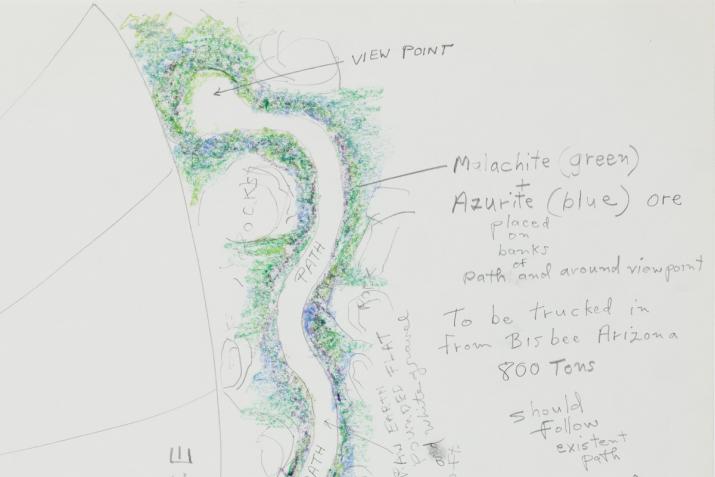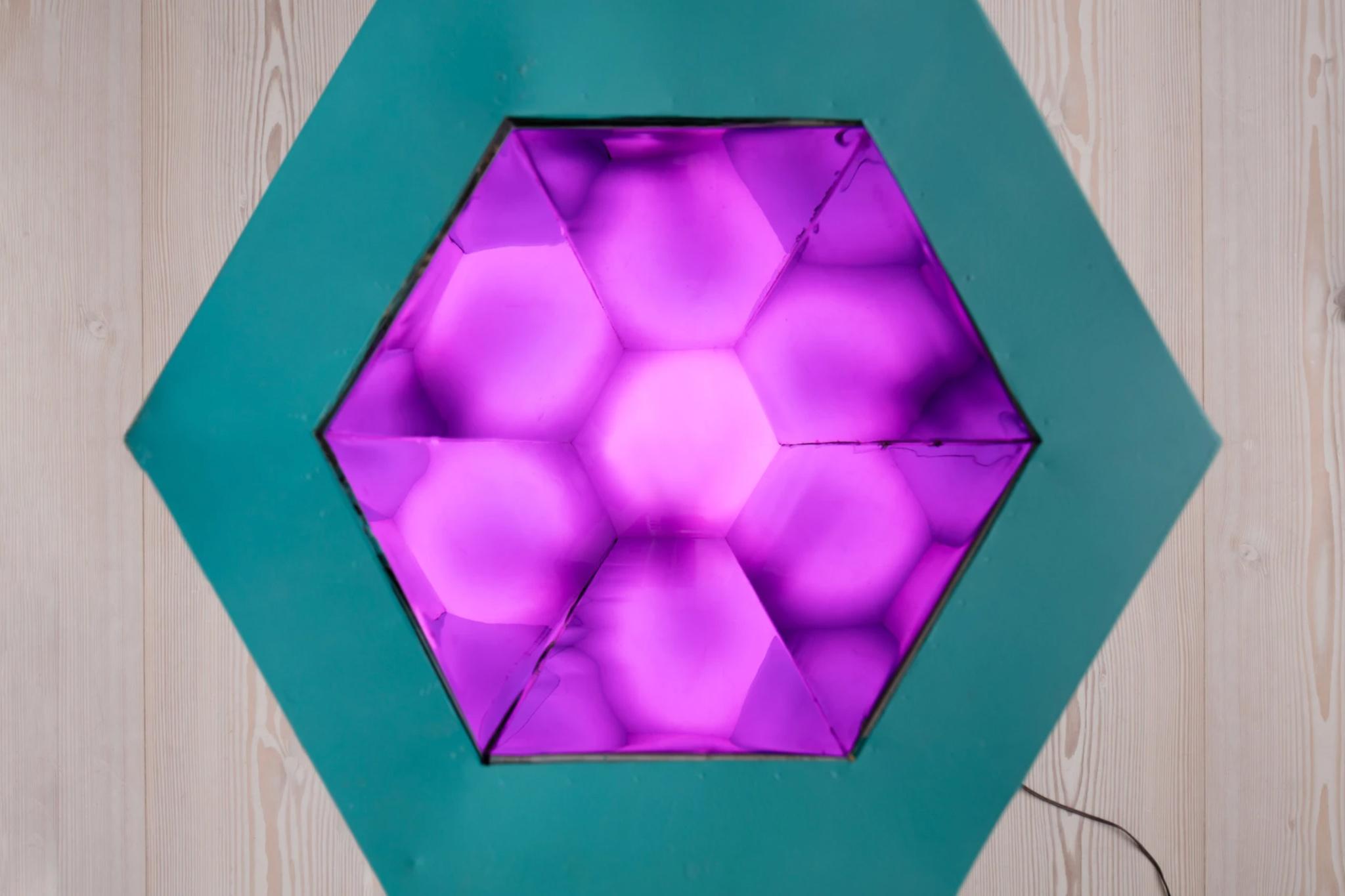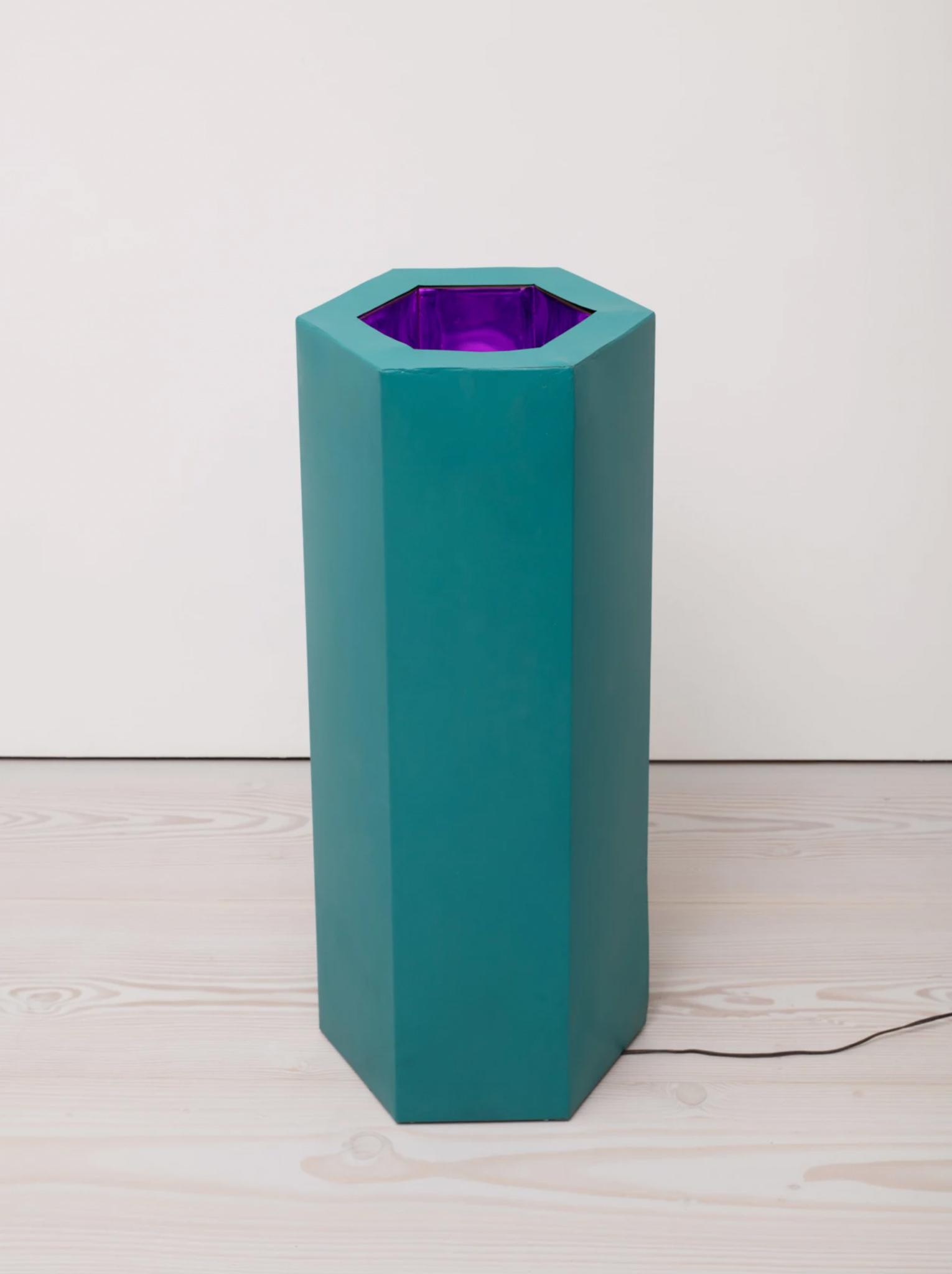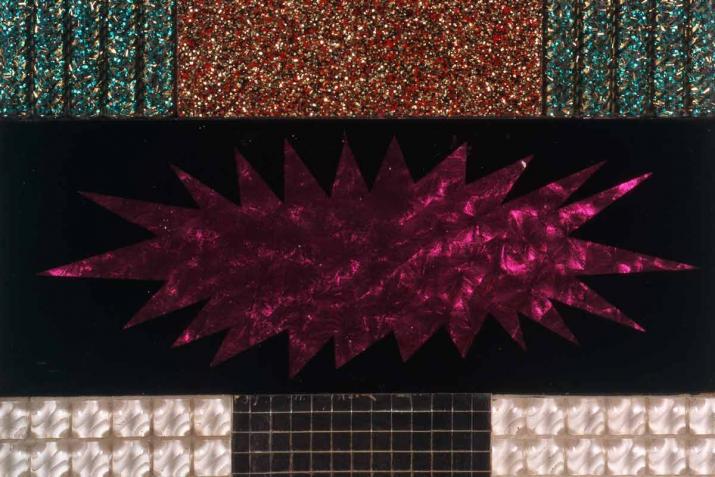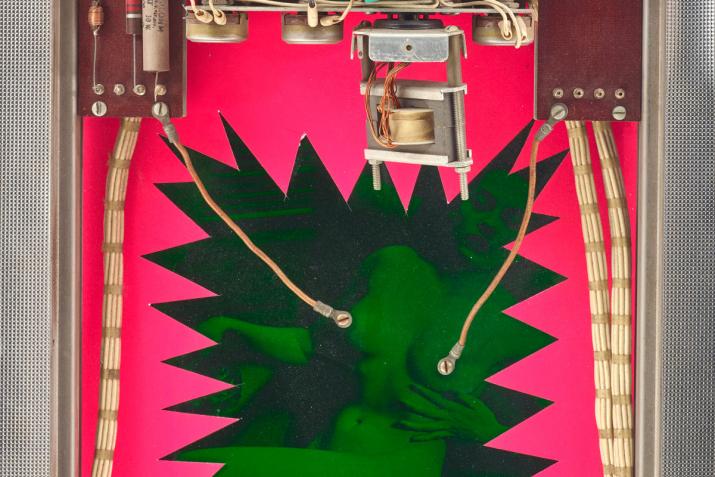Green metal, reflective inside surfaces and light
35 x 15 x 15 in. (88.9 x 38.1 x 38.1 cm)
© Holt/Smithson Foundation / Licensed by Artists Rights Society, New York
Made of green painted metal, plastic, and electric light, Crater marks a transition point in Robert Smithson’s sculptural thinking. It rises from the ground as a symmetrical, hexagonal metal structure, extends upward uniformly until reaching its pinnacle, then levels off, opening to reveal a glowing purple kaleidoscopic void extending down into the sculpture’s core. This sculpture incorporates Smithson’s enduring interest in the history of the earth, landscape, crystalline structures, and science fiction.
In the early 1960s Smithson made his first sculptures, employing colorful plastics and dynamic patterns. The 1964 works Honeymoon Machine (collection Holt/Smithson Foundation), Quick Millions (collection Centre Pompidou), and The Eliminator (Sylvio Perlstein Collection), for example, collide modernity, pop culture, and art history. At this time, Smithson started to create what he called “quasi-minimal” sculptures, works with a pared-back aesthetic that, unlike those of his artist-contemporaries, bear the traces of being made by hand rather than by machine. The earliest of these geometric sculptures use color, as can be seen in the example held in collection of Museo Reina Sofia. By 1966 he turned to monochrome and mirrored ziggurat forms, such as the example in the collection of Dia Art Foundation.
Crater sits between these positions. Importantly, it points to Smithson’s profound concerns for geologic time and volcanic landscapes, while foreshadowing his interest in aerial viewpoints and vibrating with his collages, paintings, and drawings that allude to hallucinogenic science fictions.
